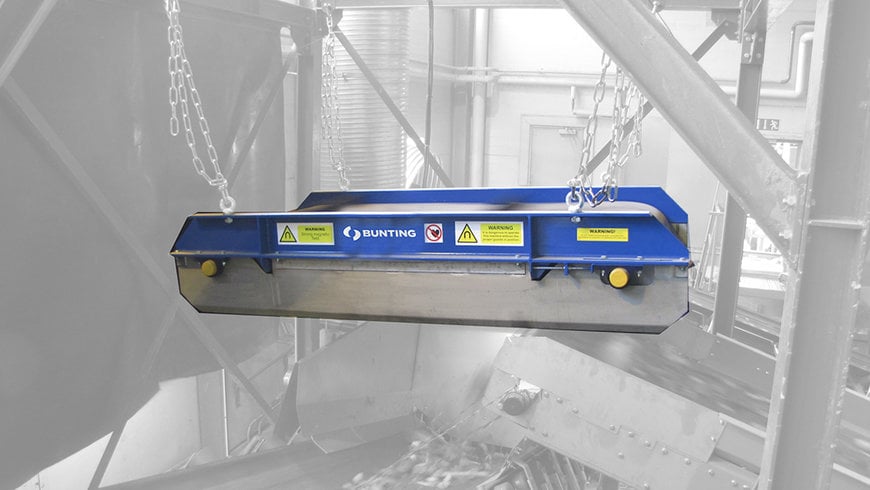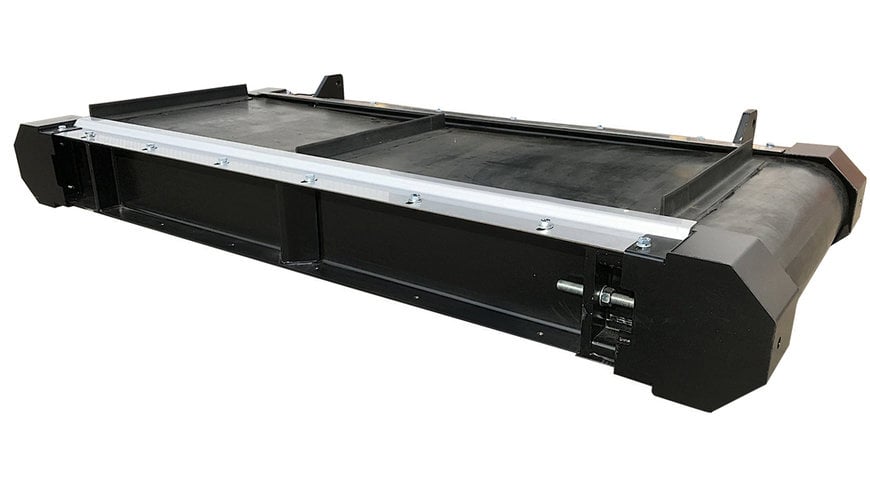www.magazine-industry-usa.com
30
'24
Written on Modified on
Bunting Permanent Overband Magnet Selection Criteria
Permanent Overband Magnets are commonly used in mines and quarries to remove tramp ferrous metal and protect crushers, screens, and conveyors. Different designs are developed for specific applications, and understanding installation is crucial for selecting the right magnet.

Bunting is one of the world’s leading designers and manufacturers of magnetic separators, eddy current separators, metal detectors and electrostatic separators. The Bunting European manufacturing facilities are in Redditch, just outside Birmingham, and Berkhamsted, both in the United Kingdom.
The Overband Magnet Workhorse
Bunting designed and built the first Permanent Overband Magnets in the early 1980s and has since supplied thousands to companies operating across the world. Although the basic technology has not changed, advances in magnet materials and manufacturing techniques have significantly enhanced the ferrous metal separation performance.
Overband Magnets lift and automatically remove tramp ferrous metal from conveyed mined or quarried rock. The permanent design features a magnet block mounted in a frame, with two or four pulleys, and a revolving self-cleaning rubber belt.

Bunting Overband Magnet on a mobile crusher
In operation, mined or quarried rock is conveyed underneath the Overband Magnet which attracts, lifts and then removes damaging tramp ferrous metal. The size and type of magnetic system (Permanent or Electro) is dictated by the conveyor width, depth of material on the conveyor and the nature of the tramp ferrous metal. Permanent Overband Magnets are commonly found on mobile plant such as crushers, screens and shredders, and in lower volume installations.
Overband Magnet Models and Applications
Bunting’s range of Permanent Overband Magnets includes four different models to suit different installations. The heavy-duty PCB model suits quarry and small mining operations, operating at suspension heights of up to 400mm on conveyors between 300mm and 2000mm wide.

Bunting's QBC Permanent Overband Magnet
The PCB-C compact and lightweight model suits mobile plant installations, such as crushers and screens, and operations where space is limited. The PCB-C operates at suspension heights up to 250mm, above 600mm to 1500mm wide conveyors.
For installations where the Overband Magnet is located in a difficult location for regular maintenance, Bunting designed the QBC quick-belt change model. As the model implies, the self-cleaning belt is easy and quick to change, reducing downtime. This model operates at suspension heights up to 300mm on conveyors between 600mm and 1500mm.
The Tri-Polar Overband Magnet produces a different shaped magnetic field with increased power. Although commonly heavier, the deeper magnetic field means that the suspension height of the Tri-Pole is higher, up to 400mm. The shape and depth of the magnetic field makes this model better suited for the separation of smaller or long and thin (e.g. nail-like) tramp ferrous metal.
Overband Magnet Selection
Selecting the correct Overband Magnet, in terms of permanent or electro and the specific model, is dictated by the application. Bunting’s applications engineers assess the ferrous metal separation objective (i.e. the plant being protected); the nature of the tramp ferrous metal (i.e. shape, size, etc.); and the conveyed rock (i.e. size range, burden depth). These criteria assist the team in selecting the optimum Overband Magnet for any given application.
With decades of experience of designing and building Overband Magnet for mining and quarrying applications, Bunting continues to provide innovative and many bespoke magnetic separation solutions.
www.bunting-redditch.com

